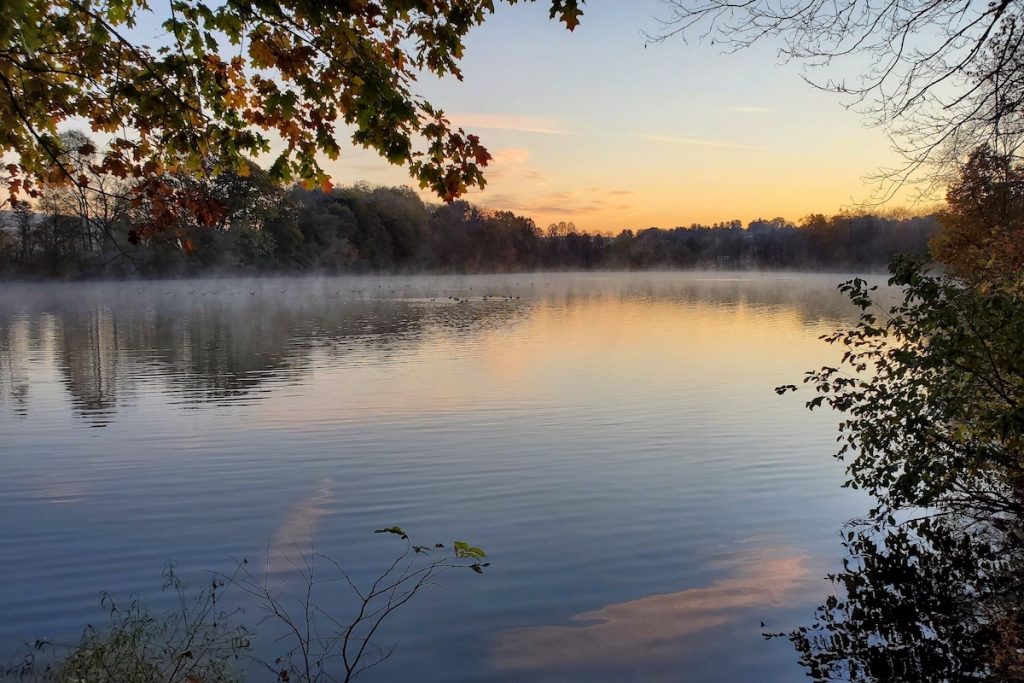Together, We Succeed.
Benedictine Hallmarks and the Love of Birds

Having good bird identification skills is worthwhile for students pursuing ornithology, wildlife biology, ecology, or conservation biology as a career. However, bird identification is something that many people want to learn, regardless of their career path or life experiences. I constantly field questions from family and friends regarding a bird that someone saw. The person will describe it to me, explaining its main color scheme and pattern, its relative size, and the kind of habitat it was in. Then they ask me “what bird was that?” I will usually narrow it down to a couple possibilities and ask them for more information before giving them an answer. But why do they care about the bird’s identity? I’ve never thought to ask that question. I have a few guesses:
First, people may just be curious about the world around them. They desire more knowledge and personal growth.
Second, people want to name a bird they saw to give it a unique position in their memory. The bird impacted them in some way, and they want to remember the feelings they had when they saw it. It’s easier to remember something if it has a name.
Lastly, people have a general sense of what is common and what is uncommon, and when they see a bird they’ve never seen before, it is a relative rarity and thus has extra value. I’m using words (rarity and value) that are sometimes used in a financial or economic sense, but in this case I use the words in an ethical or spiritual sense. Something perceived to be rare is something to be cherished and protected through stewardship. Diversity, which by definition includes rarity, is a sign of God’s love—how broad it is, and how rich is God’s creation. People want to know the identity of that unfamiliar bird because its very existence provides us wonder. It is an existential goodness.
In all these cases, seeing a bird—especially an unfamiliar one—is an event that affects someone at a very personal level. Birds are beautiful. They are fragile. They are social and live in community. They are magical because they can fly and we cannot. They have different personalities. Perhaps most of all, birds operate in a world seemingly independent from our own, one with an ancient stability that never developed malpractice, falsehood, or busyness (1). It’s like we are visitors in a foreign place, and if a bird comes close enough for us to notice them, surely we are being welcomed into their avian realm. This hospitality happens only for a moment, though. The birds usually fly off within a matter of seconds after we’ve spotted them. That makes them all the more tempting to search for, study, and connect with (2). To me, birds are messengers from heaven, usually in a figurative sense, but sometimes in a literal sense. They have caused me to say prayers of thanksgiving or prayers of intervention. If others feel the same way about birds as I, then no wonder there is a general desire to know the birds around us. The next time someone asks me “what bird was that?” I plan to say “it was a species of heaven.” They might be puzzled by my answer at first, but then they’ll smile and nod, knowing that I am right.
After I wrote the paragraph above, I realized that I was using words relating to the Benedictine hallmarks that strongly permeate our community here at Saint Vincent College. This was by accident until I saw the pattern and then added to it. I’ve underlined the particular words that are integral to the Benedictine tradition. Having used so many of these words to describe our experience with birds, I think I’ve shown why the study of ornithology belongs here at a small Catholic, Benedictine, and liberal arts college. Birds are mentioned at least a couple hundred times in the Bible, so there is plenty of religious precedent for bird appreciation on a Catholic campus. And the study of birds is truly part of the liberal arts because not only can one learn about the scientific principles of anatomy, physiology, and behavior; one can also learn about birds in the context of art, music, culture, literature, and environmental law and policy. This campus is for the birds! My last blog post was about the bird walks I lead each week on campus. It’s true that these bird walks are meant to help people identify birds, but I think I’ve shown here that there’s more to experience that just that. The reason we go out in the cold, the rain, the wind and snow, just to spot an American Robin or a Northern Cardinal is because even those common species are citizens of an enchanted sphere, and we come closer to communal membership when we see them.
Endnote
- The biologist in me must take the opportunity to say that even though birds might seem to live in a world different from our own, they do not. We must be aware of how our human actions impact them, including how we alter the landscape, release pollutants, and hasten global climate change. For these reasons, the opportunity to be in a bird’s presence is at great risk today. Further, ecological systems are not as stable as they seem, even if one removes human influence. Thus, the stability that I mention is more a projection of what humans may desire in life, rather than what really exists in nature.
- The Benedictine Hallmark of conversation is what I’m alluding to here. It is the process of inwardly-directed conversation so as to grow in intellect, skill, and in likeness to the image of God.
This article is written by Dr. Jim Kellam, Associate Professor of Biology at Saint Vincent College.

